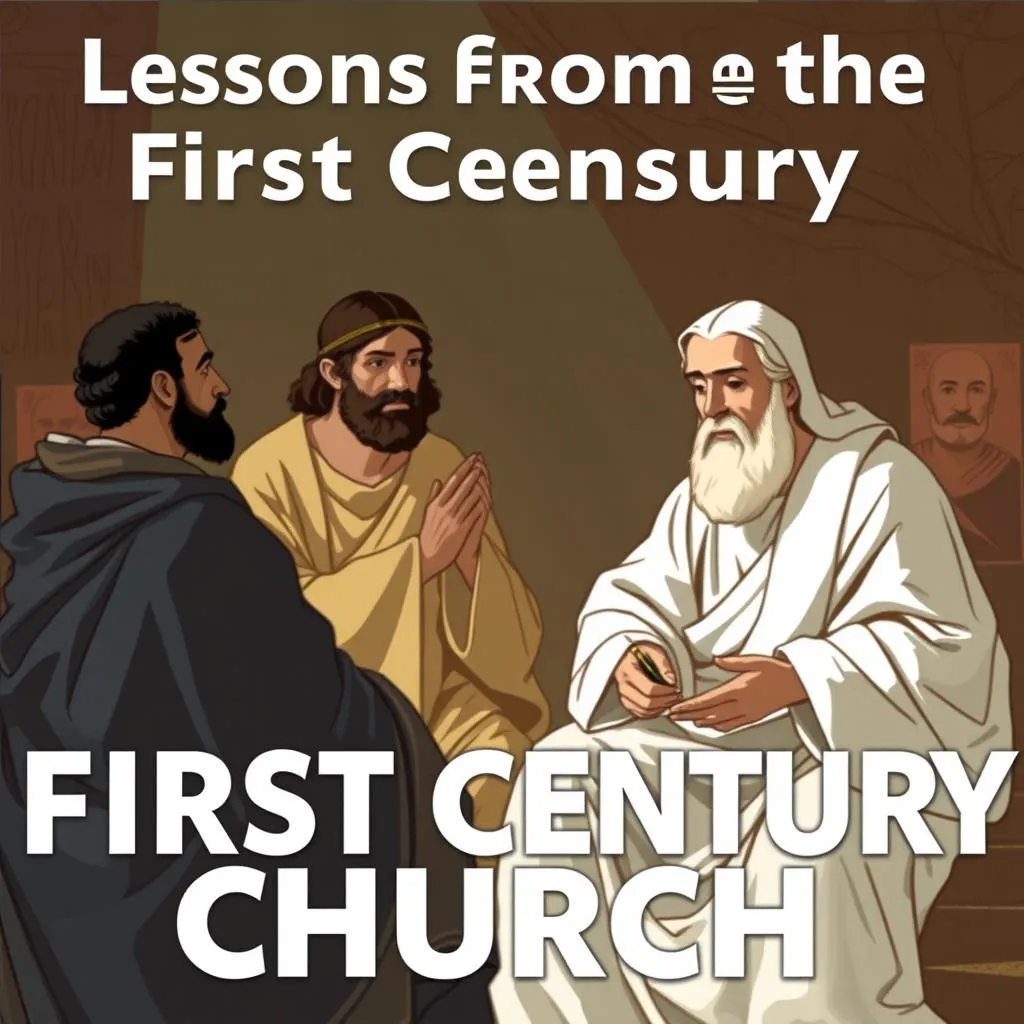The First Century Church, also known as the Apostolic Era, was a time of great growth, persecution, and transformation for the early Christian community. As we reflect on this period, we can learn valuable lessons that can inform and inspire our faith today. Here are some key takeaways:
1. The Importance of Community
The First Century Church was built on a foundation of community and fellowship. Believers gathered together regularly to share meals, pray, and support one another (Acts 2:42-47). This sense of community was essential to their survival and growth, and it’s a model that we can still learn from today.
2. The Power of Prayer
Prayer was a central part of the First Century Church’s life and practice. The early believers prayed fervently and consistently, seeking God’s guidance, protection, and empowerment (Acts 1:14, 2:42, 3:1). Their prayers were often answered in remarkable ways, demonstrating the power of prayer to shape our lives and our world.
3. The Role of Leadership
The First Century Church had a variety of leaders, including apostles, prophets, and elders. These leaders played a crucial role in guiding the community, resolving conflicts, and proclaiming the gospel (Acts 1:21-22, 6:1-7, 13:1-3). Their example reminds us of the importance of leadership in the church, and the need for leaders who are humble, wise, and Spirit-led.
4. The Challenge of Persecution
The First Century Church faced intense persecution, both from within and outside the Jewish community (Acts 4:1-22, 5:17-42, 7:54-60). Despite this opposition, the believers remained faithful, even joyful, in the face of suffering (Acts 5:41, 16:22-25). Their example encourages us to stand firm in our faith, even when we face challenges and hardships.
5. The Importance of Mission

The First Century Church was deeply committed to mission and evangelism. The believers saw themselves as ambassadors for Christ, called to share the good news with a wider world (Acts 1:8, 2:14-40, 10:34-43). Their example reminds us of the importance of sharing our faith with others, and of being witnesses for Christ in our daily lives.
6. The Role of the Holy Spirit
The Holy Spirit played a vital role in the life and practice of the First Century Church. The Spirit empowered the believers for witness and service, guided them in their decision-making, and comforted them in times of distress (Acts 1:8, 2:1-4, 10:44-48). Their example reminds us of the importance of seeking the Spirit’s guidance and empowerment in our own lives.
7. The Value of Diversity
The First Century Church was a diverse community, made up of people from different backgrounds, cultures, and socio-economic contexts (Acts 2:5-12, 6:1-7, 13:1-3). This diversity was a strength, not a weakness, as the believers learned to appreciate and celebrate their differences. Their example encourages us to value diversity in our own churches and communities.
8. The Importance of Forgiveness
The First Century Church struggled with issues of forgiveness, particularly in the wake of Peter’s denial and the apostles’ disagreements (Matthew 26:69-75, Acts 5:1-11, 15:1-35). However, they ultimately learned to practice forgiveness and reconciliation, recognizing that these virtues are essential to the health and unity of the church. Their example reminds us of the importance of forgiving others, and of seeking forgiveness when we have wronged others.
9. The Role of Scripture
The First Century Church revered Scripture, recognizing its authority and importance in their lives (Acts 2:14-40, 10:34-43, 17:1-3). They studied Scripture, preached from it, and applied its teachings to their daily lives. Their example encourages us to prioritize Scripture in our own lives, and to seek to understand and apply its teachings in our own contexts.
10. The Hope of Resurrection
The First Century Church lived in the shadow of the resurrection, recognizing that Christ’s victory over death and sin was the foundation of their faith (Acts 2:22-28, 3:13-15, 4:1-12). Their example reminds us of the hope that we have in Christ, and of the promise of eternal life that is ours through faith in him.
By learning from the First Century Church, we can gain a deeper understanding of the Christian faith and its practices. We can also be inspired to live out our faith with greater passion, conviction, and joy, recognizing that we are part of a larger community that stretches back centuries and spans the globe.
Charts: First Century Church

- Timeline: A timeline of the First Century Church, highlighting key events and figures.
- Leadership Structure: A diagram of the leadership structure of the First Century Church, including apostles, prophets, and elders.
- Mission and Evangelism: A chart outlining the mission and evangelism strategies of the First Century Church, including their use of Scripture and the role of the Holy Spirit.
Frequently Asked Questions (FAQs)
- Q: What was the First Century Church?
A: The First Century Church refers to the early Christian community, which existed from the time of Jesus’ resurrection to the end of the 1st century AD. - Q: Who were the key leaders of the First Century Church?
A: The key leaders of the First Century Church included the apostles, such as Peter, Paul, and John, as well as prophets and elders. - Q: What was the role of the Holy Spirit in the First Century Church?
A: The Holy Spirit played a vital role in the life and practice of the First Century Church, empowering the believers for witness and service, guiding them in their decision-making, and comforting them in times of distress. - Q: How did the First Century Church practice forgiveness and reconciliation?
A: The First Century Church practiced forgiveness and reconciliation through the teachings of Jesus and the example of the apostles, recognizing that these virtues are essential to the health and unity of the church. - Q: What was the significance of the resurrection in the First Century Church?
A: The resurrection was the foundation of the First Century Church’s faith, recognizing that Christ’s victory over death and sin was the source of their hope and salvation. - Q: How did the First Century Church engage in mission and evangelism?
A: The First Century Church engaged in mission and evangelism through the use of Scripture, the role of the Holy Spirit, and the example of the apostles, recognizing that they were called to share the good news with a wider world. - Q: What can we learn from the diversity of the First Century Church?
A: The diversity of the First Century Church teaches us the importance of valuing and celebrating our differences, recognizing that our diversity is a strength, not a weakness. - Q: How did the First Century Church practice community and fellowship?
A: The First Century Church practiced community and fellowship through regular gatherings, shared meals, and mutual support, recognizing that these practices are essential to the health and unity of the church. - Q: What was the role of Scripture in the First Century Church?
A: Scripture played a central role in the life and practice of the First Century Church, recognizing its authority and importance in their lives. - Q: How can we apply the lessons of the First Century Church to our own lives and churches?
A: We can apply the lessons of the First Century Church by prioritizing community, prayer, and Scripture, and by recognizing the importance of forgiveness, reconciliation, and mission in our own lives and churches.

